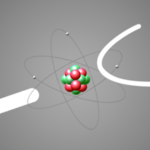
APPEC SAC sub-committee to prepare report on Direct Detection of Dark Matter
Over the past year, the Scientific Advisory Committee (SAC) received mandate from the General Assembly to form a Dark Matter (DM) Direct Detection sub-committee, which is now ready to begin its work.

How to detect Dark Matter (credit: HAP / A. Chantelauze)
It is chaired by Leszek Roszkowski, who is supported by 12 experts from different fields covering relevant aspects of direct detection such as experiments targeting axion searches, LAr and LXe experiments, scintillating crystals, CCDs, theory and astronomy and cosmology connections, as well as connections with collider measurements.To aid in the discussions and to formulate concrete recommendations for the experimental effort in direct DM detection for the next decade, the DM Direct Detection committee is expected to provide an assessment of current and future scientific opportunities in non-accelerator DM searches, and to summarize the results in a written report.
The final report is expected to include:
- The global context of DM particle searches, including the existing hints or evidence for DM particles, an inventory of alternatives for the particle nature of DM, and an inventory of present and best estimates of foreseen sensitivities of various techniques and how they compare to other than direct detection methods.
- An inventory of existing DM experiments, with focus to Europe, and the technologies adopted by these, with current most competitive results.
- A comparative SWOT analysis of existing, planned and proposed technologies for DM direct detection with the potential to surpass current sensitivities in the next decade with the eventual goal of reaching or surpassing the so-called neutrino floor.
- An assessment of the required infrastructure in Europe, including maintenance and upgrades of existing facilities.
- A list of likely technological and scientific synergies between the different direct detection technologies and with research and R&D outside of the field.
- An inventory of physics, astronomy or other research that can be done in addition to DM direct detection with the various technologies. In addition, it would be important to discuss if such other research can be done even within the specifically proposed DM experiments. Synergies with other experiments of indirect, accelerator and cosmology DM searches should also be considered, including possible technical and R&D synergies, e.g. with CERN, other laboratories and industry.
- Any other recommendations within the scope of DM direct searches, that the committee deems relevant.
The report is expected to be a useful and valuable resource not only for experts but also for a wider community of astroparticle physics and related research areas. It would therefore be welcome if the broader implications of low background physics and the search for rare events could also be discussed, as well as the relevance of the programme for the training of the next generation of researchers.



